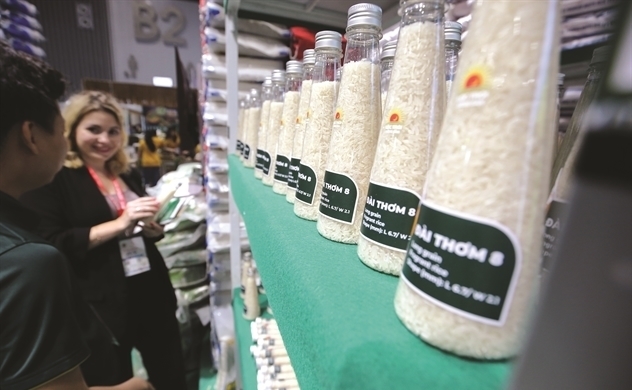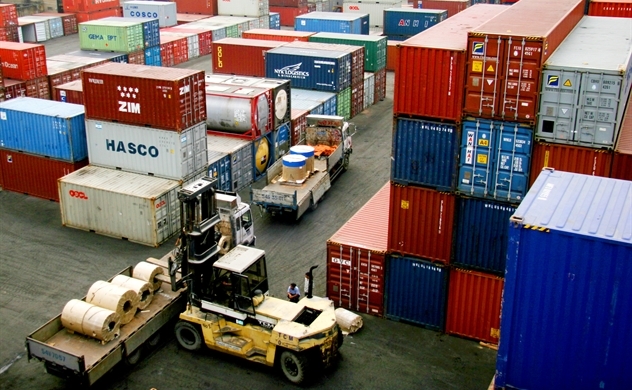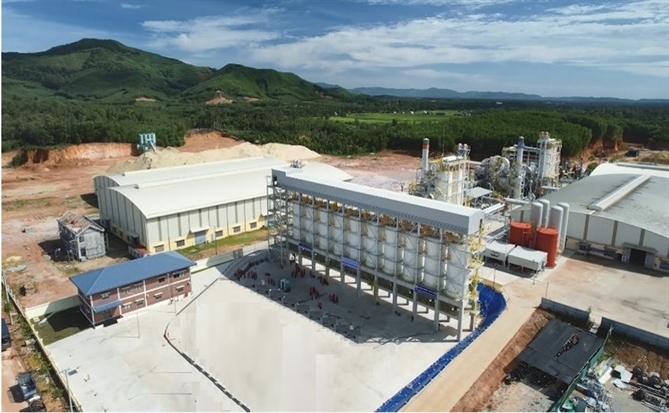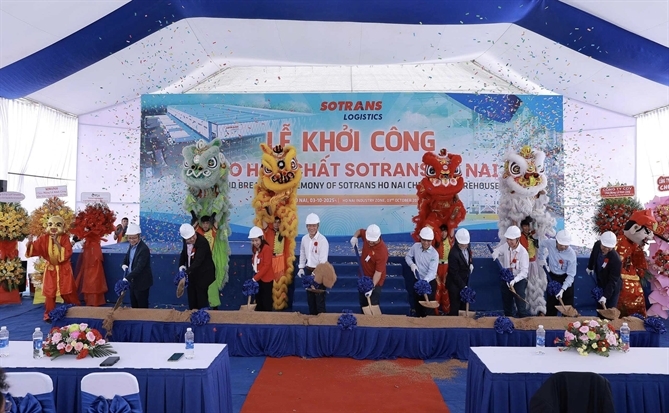Vietnam - an interesting success story
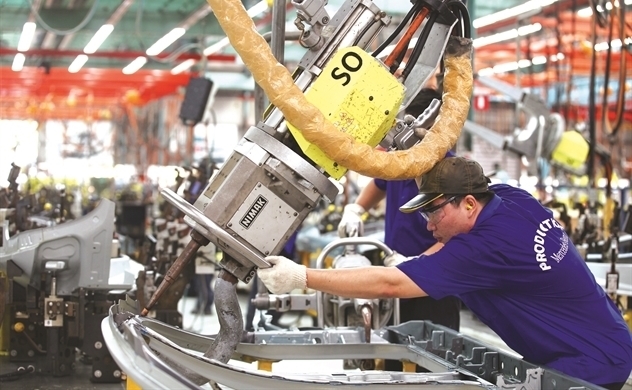
Vietnam's GDP is expected to grow at 6.3% in 2023, with inflation broadly controlled. Photo: Le Toan
From an economy specializing in producing low-value products, Vietnam has made spectacular strides to become one of the world's important manufacturing hubs for technological products. Talking to the Review’s reporter, Mr. Surendra Rosha, Co-CEO of HSBC Asia - Pacific, said that Vietnam is one of the success stories that he is very interested in.
Vietnam has enjoyed steady GDP growth despite of pandemic. How is the prospect for the country in 2023 and beyond?
Despite the global challenges, we are seeing Vietnam very much still on the move – continuing to perform, even a regional outperformer in terms of GDP growth. In fact, the country registered an 11-year high growth rate of 7.7% in 2Q22 due to a broad-based recovery – with post-Covid fully re-opening, domestic demand back on track, manufacturing continuing to roar, and exports reaching historical highs.
PMI – a measure of manufacturing confidence in the economy – posted 52.7 in August, signaling a solid improvement in the health of the manufacturing sector. Business conditions have now strengthened in 11 consecutive months.
The future is bright for the country. HSBC Global Research raised its GDP growth forecast for Vietnam in 2022 to 6.9% from 6.6%, reflecting the positive view on the country’s outlook. It is expected to grow at 6.3% in 2023, with inflation broadly controlled.
And it’s not only us who are seeing the positive prospects of Vietnam. Early this month, Moody’s upgraded Vietnam to Ba2, following an upgrade by S&P. Vietnam is now only one notch below investment grade.
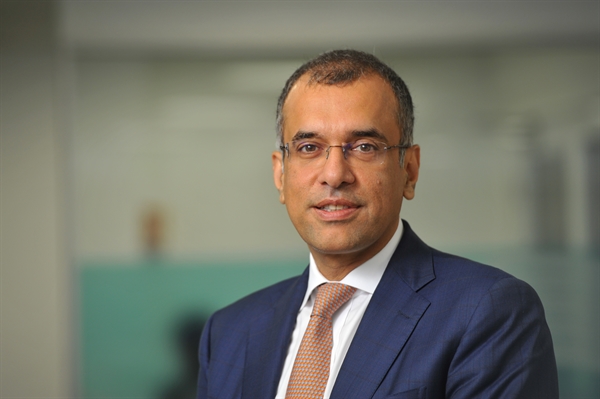 |
| Mr. Surendra Rosha, Co-CEO of HSBC Asia - Pacific |
Your view on countries like Vietnam in the global supply chain with the trend of many MNCs are shifting their supply chain to Asia?
Vietnam’s success story is always one of my favorite ones. The country has effectively transformed into an emerging global production base.
Vietnam is an attractive destination due to a number of factors including its strategic location, competitive labor, production costs, political, currency, and social stability, its enthusiastic participation in FTAs, and the resilience and entrepreneurial spirit of the Vietnamese people.
If you look back in time, Vietnam initially started as an exporter of relatively low-value-added products like textiles and footwear. Vietnam has repeatedly proved its ability to climb up the value chain over the years – to the point where the country has grown into a key manufacturing hub for tech products within the electronics space. Electronics exports reached a record of $108bn in 2021, equivalent to 32% of total exports. This is from less than USD1bn or 5.5% of total exports in 2000.
Much of the success in tech started with Samsung, which started to invest in Vietnam in late 2000s. With an investment of around USD18bn over a number of years, Samsung now has eight factories and one R&D centre in Vietnam, including two smartphone factories, producing half of the company’s smartphones and tablets.
The success of Samsung has led to other tech giants, such as Google and LG, shifting their supply chains to Vietnam. The trend intensified pre-COVID as global corporates looked to build resiliency in their supply chains, and this not only lifted Vietnam’s exports but also accelerated FDI inflows.
Even though the process was partially disrupted by COVID-19, FDI inflows have remained remarkably resilient. We have seen proof – such as Apple-connected production for example. Two Taiwanese Apple suppliers, Pegatron and Foxconn, and two mainland Chinese assemblers, Luxshare and Goertek, have all announced substantial investment plans to ramp up production capacity in Vietnam.
According to the General Statistics Office of Vietnam, FDI implemented in the first 8 months of 2022 totaled $12.8 billion, representing a 10. 5% increase over the same period last year. As multinational companies seek to expand in Vietnam, the FDI export market will continue to grow.
The FDI policy environment in Vietnam has improved meaningfully over the last few years as more favourable policies have been introduced. Vietnam is now among ASEAN’s top two countries seeing the biggest improvements, including improving infrastructure, easing investment restrictions, and better fiscal management, to name but a few.
Looking ahead, we believe that Vietnam’s success story will continue. Its tech ambition is far from just being a low-end manufacturing hub. However, this would mean more reforms, including upskilling the workforce and improving infrastructure quality, are needed to grasp the opportunities.
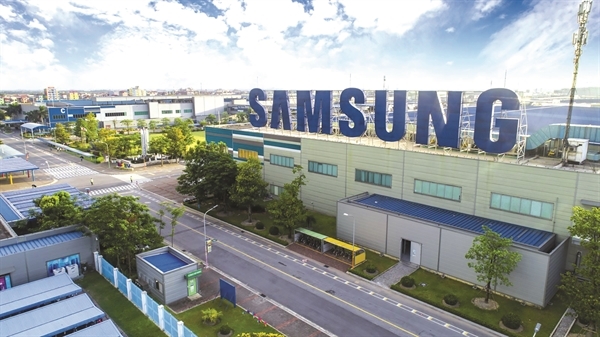 |
| Photo: VNA |
HSBC has many times emphasized its strategy of pivoting to Asia. How does it relate to the rising role of Asia, specifically ASEAN, in the world economy map?
As the leading international bank with trade in its DNA, HSBC has played a critical role in enabling the movement of international capital flow, contributing to the growth of the world economy. And Asia has always been core to the flows, and within that, the Southeast Asia region is increasingly important to our strategy because of its rising position in the world economy map.
Over the next few decades, the world, and Asia in particular, will undergo significant demographic shifts. As for Asia, the region will become considerably older, but also wealthier, and household size will continue to get smaller. These changes result in significant shifts in spending patterns across Asia. Our new proprietary demographics database shows that it is Asia’s “upper-middle class” that will be transforming consumer markets.
In Asia, the middle-class population is expected to grow at a CAGR of 2.1% until 2040 and what is defined as the “upper middle class” – that is, spending US$51-110 per person per day – is set to grow at nearly triple that rate, at a CAGR of 5.9%. The number of people in the highest bracket, that spend over US$110 every day, is expected to rise from 27m in 2021 to 50m by 2030 and balloon to 164m in 2040.
By then, Asia will have more people in this high-income bracket than either Europe or the US.
We expect to see large parts of Southeast Asia among the fastest-growing consumer class in Asia, with Vietnam set to become the tenth largest global consumer market in 2030, overtaking their Turkish, Thai and British counterparts by the end of this decade. It will likely be bigger than Germany’s by 2030.
The Southeast Asia region is becoming a more significant part of the world, thanks to not only its fast consumer market growth but also the FDI boom the region has received in recent years. Total FDI to ASEAN-6 (Singapore, Malaysia, Indonesia, Thailand, Vietnam and the Philippines) has average nearly US$127bn per year since 2010, approximately 3 times more than the average over the previous decade (average in 2000-09: US$41bn). Similarly, net FDI (inbound minus outbound direct investment) averaged nearly US$54bn a year since 2010, almost 4 times the average from the previous decade.
The share of ASEAN-6 inflows of world FDI also further exemplifies this trend, accounting for a record high of around 13% of world FDI inflows in 2020. We believe this trend is likely to continue in the medium term, given the region’s growth outlook remains robust. Thinking of FDI-driven economic success stories, Vietnam naturally stands out. It is a country that has turned itself into a rising star in global supply chains, gaining substantial global market share in sectors including textiles, footwear and consumer electronics. The country is the region’s second largest FDI receiver relative to GDP (only second to Malaysia). We believe Vietnam’s competitive FDI regime and sound macro fundamentals should continue to attract quality FDI, which is key in helping the economy move up the value chain.
The external environment, however, seems not so favorable. How do you see the challenges ASEAN and Vietnam are facing and any exit route?
There’s no denying that in aggregate the global growth picture looks bleak. I have seen even the most optimistic of economists struggle to find reasons for upside surprises amidst the continued period of weak consumer and business sentiment, slowing manufacturing data and elevated energy prices. Inflationary pressures remain at the heart of all of this. The surge in energy prices in Europe poses substantial downside economic risks – both to household spending and to businesses’ ability to survive.
However, as I visit many of our Asia markets, speaking with many of our clients, businesses and even governments, my view is that the impact is lower in Asia. Specifically, Southeast Asia markets have a resilient story. Exports are holding up. FDI remains strong. Tourism is reviving. Look at Vietnam as an example – its domestic economy continued to gain traction, despite a less rosy external picture.
That said, inflation will continue to be the dominant buzzword in economic headlines and Southeast Asia countries should brace for impact from economic volatility.
Uncertainty is obviously impacting investment spending, which in turns affect FDI. But investors look for certainty and Vietnam has been a sea of calm compared with many other frontier markets. It has a stable and consistent government, stable currency, 15 free trade agreements with other markets around the world and a cost-competitive proposition.
With Vietnam PM’s strong commitments at the COP26, Vietnam will definitely need to transition towards sustainable growth. What are the advantages and disadvantages of Vietnam in this journey?
Vietnam’s 2050 net-zero goal is an ambitious one, reflecting the strong commitment of the country and that it is taking climate change seriously. Starting the change at the top is one of the most important advantages for Vietnam in this journey. We can see that the Government has taken many steps already, including the recently approved National Climate Change Strategy to 2050. It’s a clear roadmap, with detailed plans on how Vietnam is going to meet its targets.
Vietnam’s bold commitment also sent out a strong message to the world. This can help the country draw attention and gain the essential support of international organisations. Such financial and technical support can be another advantage for Vietnam in achieving its climate goals.
It’s undeniable that government efforts alone will not be enough. This pathway requires the engagement of different stakeholders from both public and private sectors. The good news is Vietnam’s businesses are more and more concerned about this fight against climate change. And they have started to take action.
The transition can be found in multiple sectors: automotive producer VinFast announcing its plan to cease production of internal combustion engine to focus on EVs; carton paper and packaging manufacturer Dong Hai Ben Tre putting environmental protection among its top priorities; seafood exporter Vinh Hoan transitioning towards a more circular model; Refrigeration Electrical Engineering Corporation (REE) constructing green buildings and producing solar energy, etc.
Most importantly, changes can be seen in the financial sector, which should be at the heart of this transition. More financial institutions announced their commitment to supporting Vietnam in this net zero race.
In fact, HSBC has committed to arranging up to US$12bn of sustainable financing for Vietnam and the corporate sector in Vietnam by 2030. We have had a track record of supporting critical green and sustainable projects in Vietnam, which all contribute to decarbonising the country’s economy.
Despite those advantages, there are certain disadvantages that may hold it back in this transition journey. Vietnam will need to align all policies, legal framework, plans, investments to its National Climate Change Strategy to achieve net zero targets. That’s a challenging task to get the whole government and society to get involved.
Although the Government’s ambition is now backed by the enthusiastic corporate sector, no policy or legislation currently exists for science-based targets or disclosures, which play an important role in emission reductions.
Another area of concern is the huge investments needed for the transition in Vietnam. UNDP estimates that Vietnam’s ambitious commitment will require US$330-370bn. According to the World Bank, building a resilient economy and heading towards net zero will cost Vietnam around US$368bn between 2022 and 2040.
The country will need to mobilize 6.8% of its GDP every year. This comes from both public and private sectors and can be a combination of domestic and international financial sources. Again, financial institutes like HSBC can help unlock Vietnam’s green finance potential.
_71741614_111156444.jpg) |
| Photo: Le Toan |
How green capital will support Vietnam in its long-term development? How can Vietnam receive and make good use of this green capital flow?
The most significant contribution sustainable finance can make to tackling climate change is financing the transition to net zero, helping businesses transition from carbon-intensive activities. It would be easy for financial institutions like HSBC to step away from heavy-emitting clients but it’s actually a wrong move in our opinion.
Stopping the investment would damage economic growth, hurt many of the communities we exist to serve, and, crucially, mean we couldn’t help those firms to reduce their emissions. So the best way forward is to provide them with the means to make their transition as swiftly and as fairly as possible.
On the other hand, green finance can be poured into climate innovation to support new growth areas, including clean energy and energy efficiency products, supporting significant growth in infrastructure for electric vehicles, rail, energy storage, hydrogen and carbon capture and storage.
For Vietnam to attract “green FDI”, it should continue the green agenda, rolling out more initiatives to realise the National Green Growth Strategy 2021-2030, while creating a more favourable environment for foreign investors. At present, international funds for green growth is still nascent. For instance, in renewable energy, investors still hesitate due to insecure electricity commercial contracts posing risk to project-based funding as well as the restrictions in regulatory and legal frameworks for refinancing existing projects. Much more needs to be done to create a hassle-free space to leverage international capital for national green growth.

 TIẾNG VIỆT
TIẾNG VIỆT 


